Some parts of the world have constantly been embroiled in conflict, and wars have been going on for millennia. You would think that people would have learned from the casualties and economic losses of all these wars–but no.
As long as there is power to grab, territories to conquer, and resources to control, the world is less likely to see peace. And this has been true since ancient times.
Some of the most famous wars in the world were the Punic Wars, fought between two superpowers, Rome and Carthage. The three Punic wars spanned 118 years and lasted between 264 and 146 Before the Common Era (BCE). These wars also spelled the end of one of the ancient world’s superpowers.
So, what happened in the Punic Wars? Let’s find out.
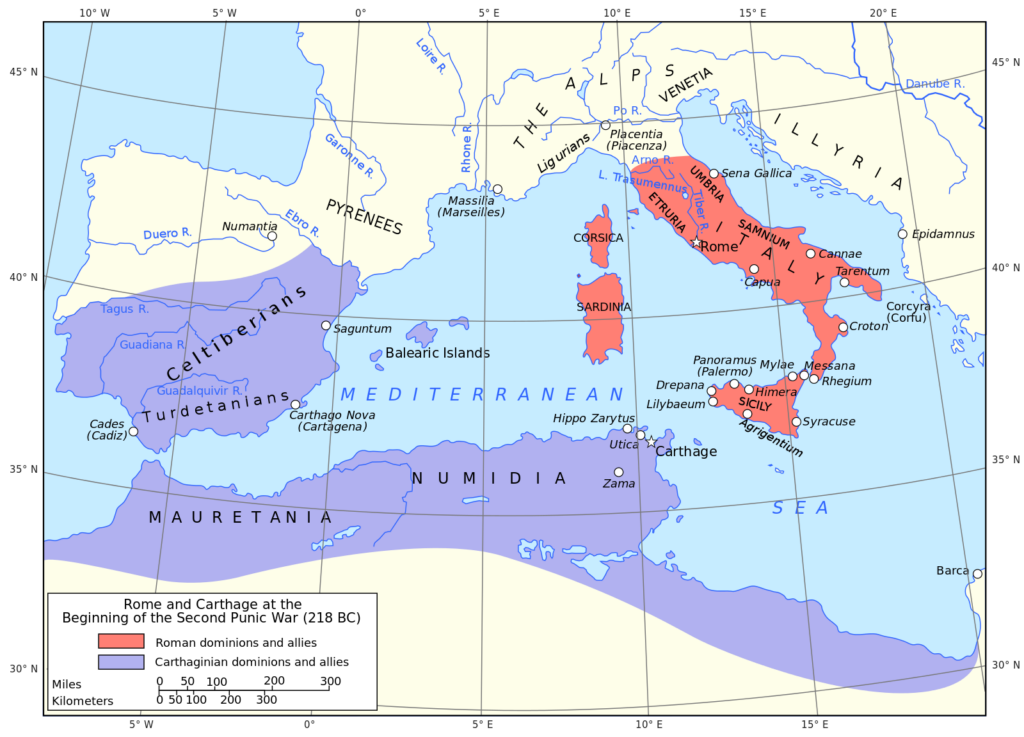
The Parties: Rome Vs. Carthage
To get some perspective on why these wars were being fought, let’s first discuss the two parties in these wars: Rome and Carthage.
While it seems Rome has always been a superpower, it’s not true. Only in the 1st BCE did Rome truly come into its own and showcase its power and influence.
Before that, Rome had one great rival- Carthage. Punic was the language of Carthage and ancient Carthage was sometimes referred to as Punic Carthage.
And because almost everyone has heard of Rome and a few of Carthage, it’s pretty easy to guess which of these superpowers was victorious.
Carthage
According to historical accounts, Carthage was the most powerful trading city in the Mediterranean between 650 and 146 BCE. It was a vibrant city, abundant in economic activities and surrounded by temples, markets, and wealthy estates.
The seat of the Carthaginian Empire had a lot of power sometime in 200 BCE as it connected to major trading ports and land routes, including the following:
- Greece
- Phoenicia (modern-day Lebanon)
- Italy
- Iberian Peninsula
- Libya
- Nubia (region along the Nile River; modern-day northern Sudan and southern Egypt)
Part of the reason Carthage became a superpower is because of its location. All Mediterranean trading ships would pass through Sicily and Tunisia, where Carthage was located.
The city also knew the power it wielded, so it built two large harbors, one for trade and the other for warships. It also had large walls to prevent attacks.
But as the Carthaginian Empire grew more powerful and rich, Rome became more resentful. But while Carthage was prepared for war, too, it was not prepared for the power that Rome wielded.
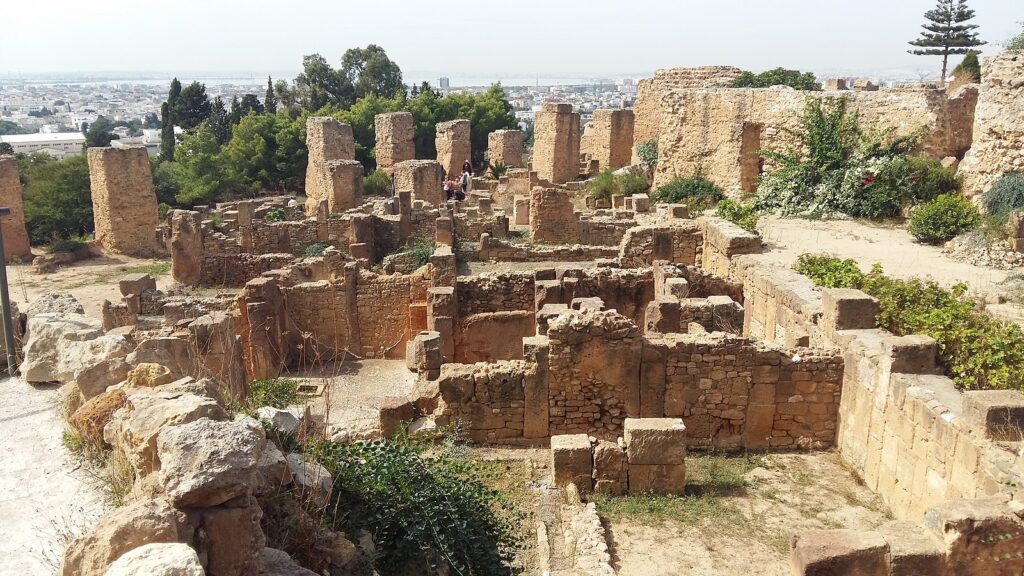
Sicilian Wars
Sometimes referred to as the Greco-Punic Wars, the Sicilian Wars were a series of battles for control over Sicily and the western Mediterranean between 490 and 340 BCE. On one side was Ancient Carthage, and on the other was Greece.
By the 5th century BCE, both parties had established colonies and ports within Sicilian coasts. They had the same idea that the more ports they had, the more control they got over Sicily.
Several small battles between the two sides ensued for around 150 years. The Carthaginians failed to take over the wanted island.
But as Ancient Carthage was utterly destroyed by the Romans during the culmination of the Punic Wars, no record exists of the Sicilian wars from the Carthage point of view. Everything we know about the Sicilian Wars is skewed in favor of the Greeks.
Some seven Sicilian Wars were fought, and the Carthaginians tried to invade Sicily three times. After the third invasion attempt, the Carthaginians gave up Sicily for good, leaving 10,000 men dead and around 15,000 as prisoners of Greek Sicily.
Pyrrhic War
The Pyrrhic War was between 280 and 275 BCE. It didn’t initially involve Carthaginians as it was a war between the Roman Kingdom and Pyrrhus, the Greek monarch of Epirus, an ancient kingdom.
Pyrrhus waged the war on behalf of the Greek city of Tarentum in Southern Italy.
Pyrrhus was strategic and won battles against the Romans with his skills and war elephants. However, the victories came with heavy losses in terms of manpower and resources.
This meant he could not afford to continue fighting Rome, which seemed to have an unlimited army and supplies.
Pyrrhus turned his attention to Sicily, where some Carthaginians had bases. He waged several battles in Sicily between 278 and 275 BCE before finally returning to Italy.
Rome
The Roman civilization dates back 14,000 years, based on archeological findings in the area. Rome has always been rich in political, cultural, and social history.
It even has one of the most profound and popular mythologies. Rome was a name and power to be reckoned with and soon threatened Carthaginian power.
One of the reasons the Romans had such a presence was because they weren’t afraid to wage war to establish power over other territories.
The Beginning
As mentioned, there are almost no surviving manuscripts on the part of the Carthaginians about any aspect of their history. Historian Polybius was considered the most reliable source of the Punic Wars as he provided an unbiased tone.
He was a Greek historian who famously wrote The Histories. It comprises 40 books about the rise of Ancient Rome to power from 264 to 146 BCE.
By 270 BCE, Rome and Carthage had been expanding their territories aggressively. Both were already considered Mediterranean superpowers at that time.
At first, both recognized the importance of diplomacy, and both lived in peace for years. The two were even in cahoots during the Pyrrhic wars, with Carthage supporting Rome when it was battling with Pyrrhus.
Sicily proved to be the primary source of conflict between the two. By 264 BCE, Carthage became the most powerful entity in the Mediterranean, while Rome had been successfully collecting territories at the same time.
Rome had established most of its presence in Italy, while Carthage continued to have properties in Sicily. At the time, this was considered a Carthaginian province.
But Sicily was an island with two warring cities, Syracuse and Messina. Like parents coming to the aid of their children, Rome and Carthage went to support different cities, and thus, prompted the First Punic War.
And so the war that spanned over 43 years started.
The Punic Wars
Rome and Carthage faced off in three wars on both land and water. The third one proved so bad that it almost erased Carthage off the map.
First Punic War (264-241 BCE)
As Rome had wielded its power in Italy, it set its sights on Sicily. It found its chance when the city of Syracuse attacked the city of Messina. Carthage backed Syracuse, and Rome came to the aid of Messina. The former allies were now foes.
The sea had always been Carthage’s home, so much so that its military harbor had 220 warships at one point. Rome accepted that it could not defeat Carthage on water, so while battling with its fellow superpower on Sicilian land, Rome continued to build up its navy.
Rome finally scored a victory in the water in 260 BCE in what was referred to as the Victory in Mylae and again in 256 BCE in the Battle of Ecnomus. However, focusing so much on the maritime war put Rome at a disadvantage, and it lost its invasion of North Africa.
However, the Romans continued to win the war at sea. It became decisive enough for them to win the First Punic Wars in 241 BCE, with Sicily officially becoming Rome’s first overseas province.
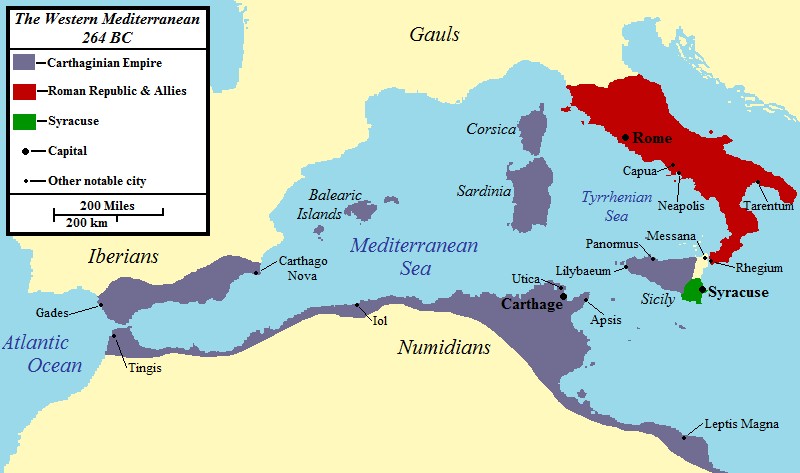
Second Punic Wars (218-201 BCE)
As they say, if at first, you don’t succeed, dust yourself off and try again. Carthage did just that and tried to face off with Rome once again.
In the 23 years since Rome had decisively triumphed in the First Punic War, it also expanded its presence on the islands of Corsica and Sardinia. Carthage, meanwhile, expanded in Spain in 237 BCE.
It was here that the great Carthaginian general, Hannibal, rose to power.
Hannibal was only six years old when his father, Hamilcar Barca, suffered the loss of the First Punic War as an army commander. Barca made Hannibal swear a blood oath of eternal hostility against the Romans. So, Hannibal grew up hating the Romans.
Meanwhile, Barca and other Carthaginians licked their wounds in Spain and mapped out their revenge plan against Rome. At just 26 years old, Hannibal became Carthage’s commander-in-chief.
In 218, Carthage had already lost its status as a naval power. But it gained a youthful leader inspired by his blood oath to his father.
Hannibal led one of the most daring attacks in history. He assembled an army composed of the Carthaginian military and mercenaries from Spain, North Africa, and Gaul (modern-day France and some parts of Western Germany and Northern Italy.
Hannibal’s troops, which included at least a dozen war elephants, trekked through the treacherous Alps to attack Rome in Cannae in 216. The Romans didn’t expect the attack.
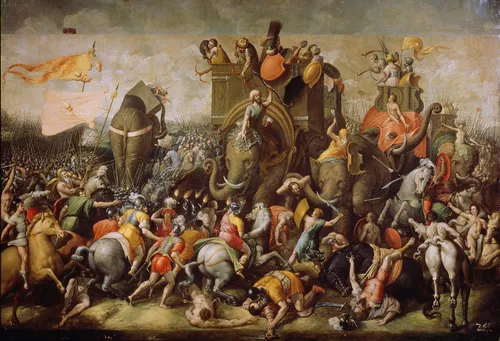
The elephants smashed enemy lines, and the Carthaginians flanked the Romans in all directions.
After winning the battle, Hannibal and the Carthaginians settled in Italy for almost 14 years. However, during this time, Rome also spawned a worthy opponent for Hannibal: Publius Cornelius Scipio.
Scipio waged a war in Spain, thinking that Hannibal and his troops would have to leave Italy and protect their home. Hannibal and Scipio finally met at the Battle of Zama (modern-day Tunisia), where Carthage lost in 202.
Carthage gave up all its territories except the ones in Africa, which it considered its original home. Hannibal lived in exile.
Rome officially won the Second Punic War in 201.
Third Punic War (149-146 BCE)
At this time, Carthage was no longer a superpower. However, political leader Cato the Elder, who was also an excellent orator, successfully convinced the Roman Senate that Carthage remained a threat to Rome.
According to historians, Cato the Elder famously said: “Carthage must be destroyed!”
Indeed, it was.
The Third Punic War was the shortest of the Roman-Carthaginian wars, as the weak Carthage could no longer withstand a siege. It lasted only three years compared to the 23 years of the First Punic War and 17 years of the Second Punic War.
In 146, the Romans started destroying Carthage house by house. The Carthaginians finally surrendered, but the 700-year-old city was gone.
The 50,000 surviving Carthaginians were sold to slavery. The Romans set their sights on new territories and new enemies.
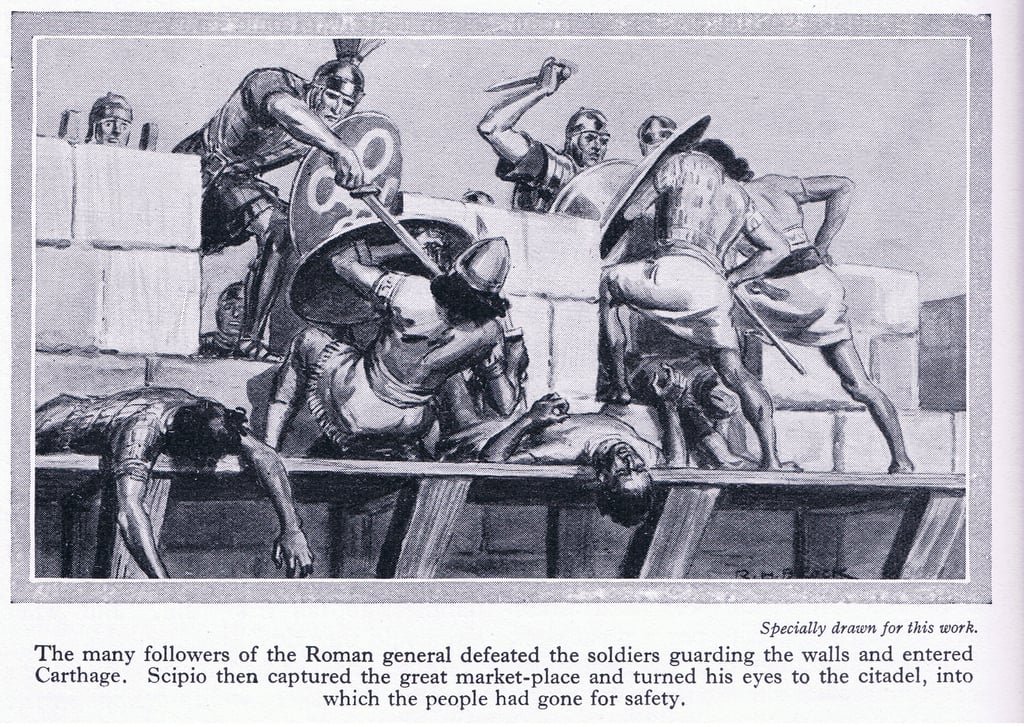
Is Carthage Truly Gone?
A Carthage exists today, but it was not THE Carthage.
Carthage is a suburb of Tunis, the capital city of Tunisia. A cityscape has since replaced the ancient port city. However, efforts continue to dig back into the past and restore the glory of Carthage, even just in museums.
The ruins of Ancient Carthage were declared a UNESCO World Heritage Site in 1979. The area incidentally overlooks the Punic port, the source of Carthage’s power.
Rome may have tried to flatten Carthage to the ground, but its spirit has lived on.
“The houses, just before the destruction, are perfectly preserved. That part of Byrsa Hill is something you have to visit for sure,” archeologist Stefano Cespa said of the area.
Archeologists continue to discover remnants of Ancient Carthage to learn more of its history from Carthage’s own culture rather than from writings of Roman and Greek historians.
The Tunisian Ministry of Culture, in partnership with the European Union, aims to restore more Carthaginian sites and open them for tourism. A significant part of the project is the reopening of Carthage National Museum in 2026.
Final Thoughts on the Punic Wars
Ancient Roman influences continue to be felt in the modern world. We see them in ancient buildings, art, science, law, and literature. There is a reason Rome grew into a superpower — primarily because Romans were skilled, smart, wily, and strong.
On the other hand, one can’t help but think along the lines of “what if.” What if it had been Carthage to win the wars? What influence would Carthage have had on our lives had it not fallen to the Romans?
The popular opinion seems to be that, with Rome’s power, Carthage was destined to fall sooner or later.

